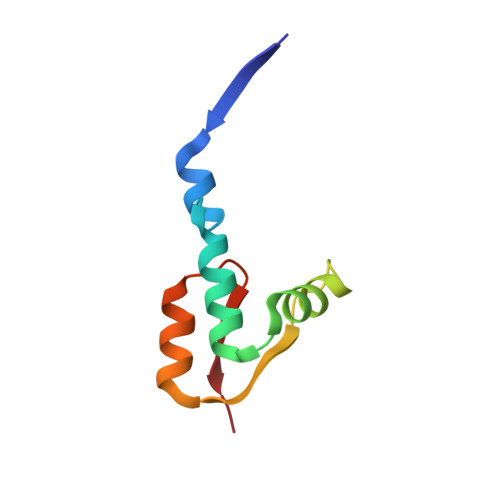

Peptidoglycan synthesis drives an FtsZ-treadmilling-independent step of cytokinesis. Recruitment of penicillin-binding protein PBP2 to the division site of Staphylococcus aureus is dependent on its transpeptidation substrates. Treadmilling by FtsZ filaments drives peptidoglycan synthesis and bacterial cell division. Peptidoglycan synthesis in the absence of class A penicillin-binding proteins in Bacillus subtilis. A DNA damage-induced, SOS-independent checkpoint regulates cell division in Caulobacter crescentus. A DNA damage checkpoint in Caulobacter crescentus inhibits cell division through a direct interaction with FtsW. FtsEX acts on FtsA to regulate divisome assembly and activity. Data mining of metal ion environments present in protein structures. Zheng, H., Chruszcz, M., Lasota, P., Lebioda, L.

Filling holes in peptidoglycan biogenesis of Escherichia coli. Membrane potential is required for MurJ function. MurJ is the flippase of lipid-linked precursors for peptidoglycan biogenesis. Detection of lipid-linked peptidoglycan precursors by exploiting an unexpected transpeptidase reaction. Large-scale determination of previously unsolved protein structures using evolutionary information. Identification of a functionally unique family of penicillin-binding proteins. Lipid II overproduction allows direct assay of transpeptidase inhibition by β-lactams. The integral membrane FtsW protein and peptidoglycan synthase PBP3 form a subcomplex in Escherichia coli. Localization of the Escherichia coli cell division protein Ftsl (PBP3) to the division site and cell pole. A central role for PBP2 in the activation of peptidoglycan polymerization by the bacterial cell elongation machinery. Structure of the peptidoglycan polymerase RodA resolved by evolutionary coupling analysis. A new platform for ultra-high density Staphylococcus aureus transposon libraries. From the regulation of peptidoglycan synthesis to bacterial growth and morphology. Specificity of the transport of lipid II by FtsW in Escherichia coli. Identification of FtsW as a transporter of lipid-linked cell wall precursors across the membrane. Peptidoglycan in obligate intracellular bacteria. Otten, C., Brilli, M., Vollmer, W., Viollier, P. The physiology of bacterial cell division. RodA as the missing glycosyltransferase in Bacillus subtilis and antibiotic discovery for the peptidoglycan polymerase pathway. Bacterial cell wall biogenesis is mediated by SEDS and PBP polymerase families functioning semi-autonomously. SEDS proteins are a widespread family of bacterial cell wall polymerases. Thus, our findings establish FtsW as a peptidoglycan polymerase that works with its cognate class B PBP to produce septal peptidoglycan during cell division. We further demonstrate that the polymerase activity of FtsW is required for its function in vivo. Here, we report that purified FtsW polymerizes lipid II into peptidoglycan, but show that its polymerase activity requires complex formation with its partner class B PBP. FtsW was previously proposed to translocate the peptidoglycan precursor lipid II across the cytoplasmic membrane 7, 8. Not all bacteria require RodA for growth however, its homologue, FtsW, is a core member of the divisome complex that appears to be universally essential for septal cell wall assembly 5, 6. Recently, it was shown that RodA-a member of the unrelated SEDS protein family-also acts as a peptidoglycan polymerase 2, 3, 4. For decades, it was thought that only class A penicillin-binding proteins (PBPs) and related enzymes effected peptidoglycan synthesis. All other funders had no role in study design, data collection and analysis, decision to publish, or preparation of the manuscript.The peptidoglycan cell wall is essential for the survival and morphogenesis of bacteria 1. The specific role of this author is articulated in the ‘author contributions’ section. Sanofi-Aventis provided support in the form of salary for author JD, but did not have any additional role in the study design, data collection and analysis, decision to publish, or preparation of the manuscript. Jacques Dumas is employed by Sanofi-Aventis. FK is research associates of the FRS-FNRS, Belgium. is recipient of a FRIA (Fonds de la Recherche pour l’Industrie et l’Agriculture) fellowship (F.R.S.-FNRS, Brussels, Belgium). P6/19), the Fonds de la Recherche Scientifique, (IISN 4.4505.09, IISN 4.4509.11, FRFC 2.4511.06F), the University of Liège (Fonds spéciaux, Crédit classique, C-06/19 and C-09/75), and a return grant to AD. This work was supported in part by the Belgian Program on Interuniversity Poles of Attraction initiated by the Belgian State, Prime Minister’s Office, Science Policy programming (IAP no.


 0 kommentar(er)
0 kommentar(er)
